How to Troubleshoot and Fix a Frigidaire Refrigerator Not Cooling
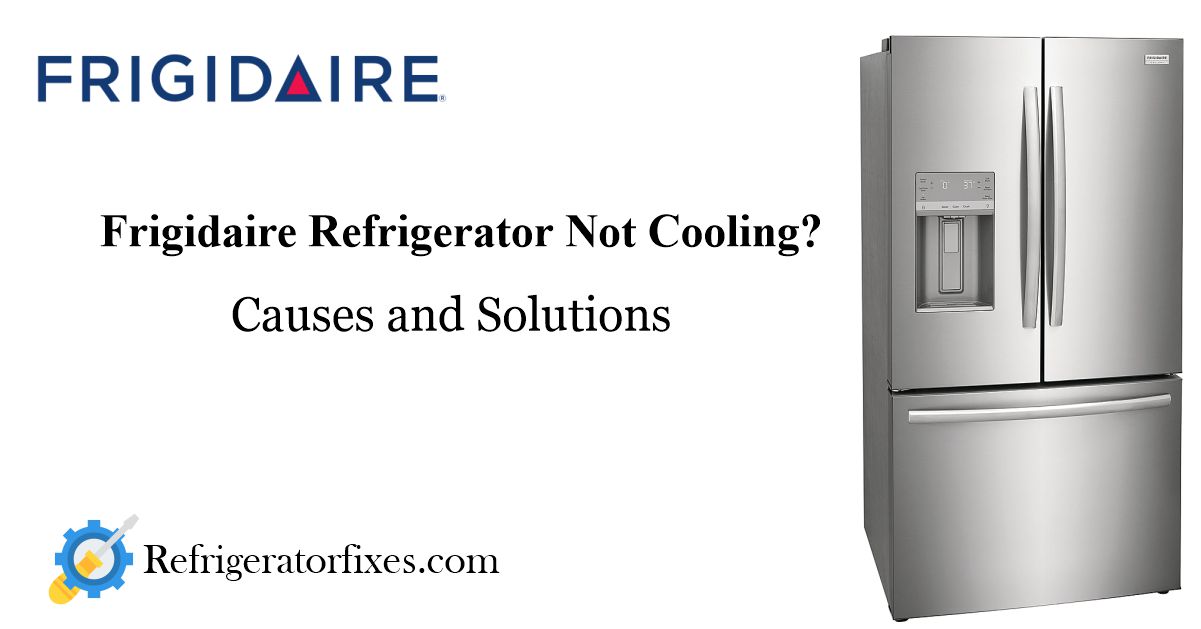
Is your Frigidaire refrigerator not cooling properly? It can be frustrating to rely on a refrigerator that fails to keep your food cold. Before considering a replacement, there are several troubleshooting tips you can try to fix the problem yourself. In this comprehensive guide, we will explore common causes of a Frigidaire refrigerator not cooling, and provide step-by-step solutions to help you resolve the issue.
READ ALSO: GE Refrigerator Not Cooling: Causes and Solutions

Frigidaire Refrigerators
Frigidaire is a well-known brand of refrigerators that offers a variety of models and features to suit different needs and preferences. Here are some facts and information about Frigidaire refrigerators that you may find useful for your article:
- Frigidaire was founded in 1918 as the Guardian Frigerator Company, and it was the first company to produce self-contained electric refrigerators.
- Frigidaire became a subsidiary of General Motors in 1919, and it was renamed as Frigidaire Corporation in 1926. Frigidaire was sold to White Consolidated Industries in 1979, and then to Electrolux in 1986.
- Frigidaire refrigerators are known for their innovation and quality. Some of the features that Frigidaire offers include:
- Smudge-Proof® stainless steel that resists fingerprints and cleans easily.
- Custom-Flex® Temp Drawer that can switch from refrigerator to freezer with a simple touch.
- Dual Ice Maker that produces both cubed and crushed ice, and can store up to 10 pounds of ice.
- Advanced Crisper that keeps fruits and vegetables fresh and crisp with adjustable humidity control.
- PureSource Ultra® II water filtration that removes 99.3% of lead and 99.9% of cysts from your water.
- Frigidaire refrigerators come in various styles and sizes, such as French door, side-by-side, top freezer, bottom freezer, compact, wine storage, beverage center, and all refrigerator. Frigidaire also offers counter-depth and standard-depth options to fit different kitchen spaces.
- Frigidaire refrigerators have received many awards and recognition for their performance and design. For example, Reviewed.com has awarded four Frigidaire and Frigidaire Gallery refrigerators “Best of 2024”. Frigidaire refrigerators have also been rated highly by Consumer Reports and other reputable sources.
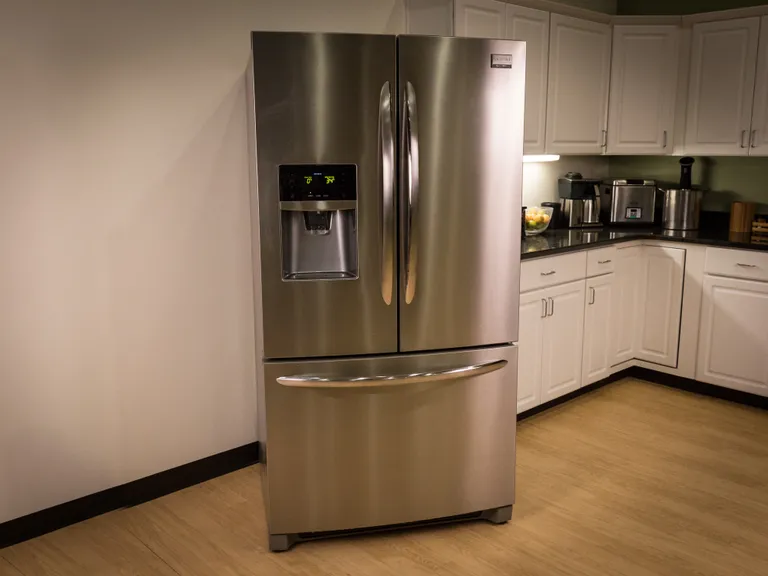
Understanding the Common Causes of Frigidaire Refrigerator Not Cooling
A Frigidaire refrigerator not cooling can be attributed to various factors. By identifying the root cause, you can determine whether a DIY solution or professional repair is required. Here are some common causes of cooling issues:
1) Temperature Adjustment
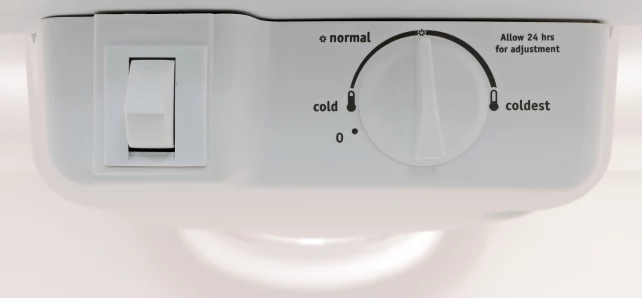
The first step in troubleshooting a Frigidaire refrigerator not cooling is to check the temperature settings. It’s possible that the temperature has been inadvertently adjusted, resulting in inadequate cooling. Refer to your user manual to determine the recommended temperature settings for your specific model. Typically, a refrigerator should be set between 35-37℉ for optimum cooling.
2) Airflow Blockage
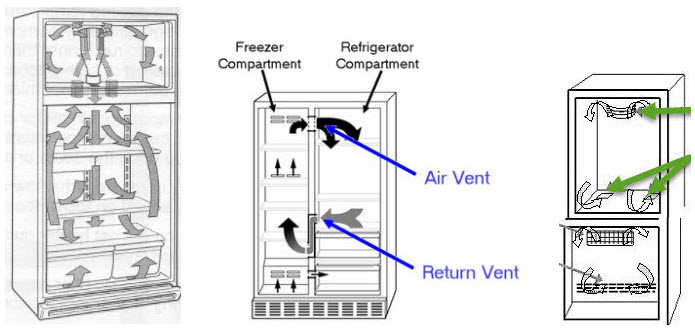
If your Frigidaire refrigerator is overcrowded with food, it can impede proper airflow and lead to insufficient cooling. Ensure that the refrigerator is not overloaded and that there is enough space for air to circulate between items. Additionally, make sure that items are not blocking the air vents, which are responsible for distributing cold air from the freezer.
3) Dirty Condenser Coils
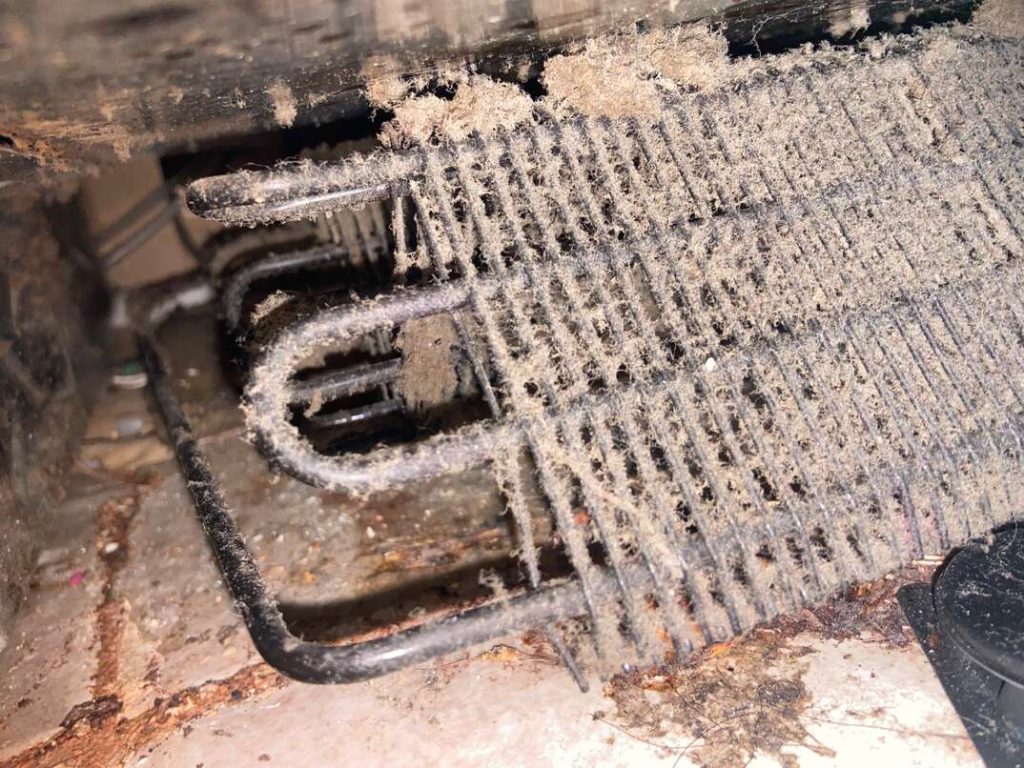
Condenser coils play a crucial role in cooling the refrigerator by dissipating heat. Over time, these coils can accumulate dirt and debris, hindering their ability to cool the refrigerant effectively. It is recommended to clean the condenser coils every six months to ensure optimal performance. Consult your user manual to locate the condenser coils on your Frigidaire refrigerator, and follow these steps to clean them:
- Unplug the refrigerator.
- Remove the panel or grille to access the coils.
- Use a narrow hose vacuum attachment to remove loose dirt and debris.
- Use an appliance brush to gently scrub away any lingering dirt.
- Vacuum any remaining dust and dirt on the floor.
- Replace the panel or grille and restore power to the refrigerator.
4) Faulty Door Seals
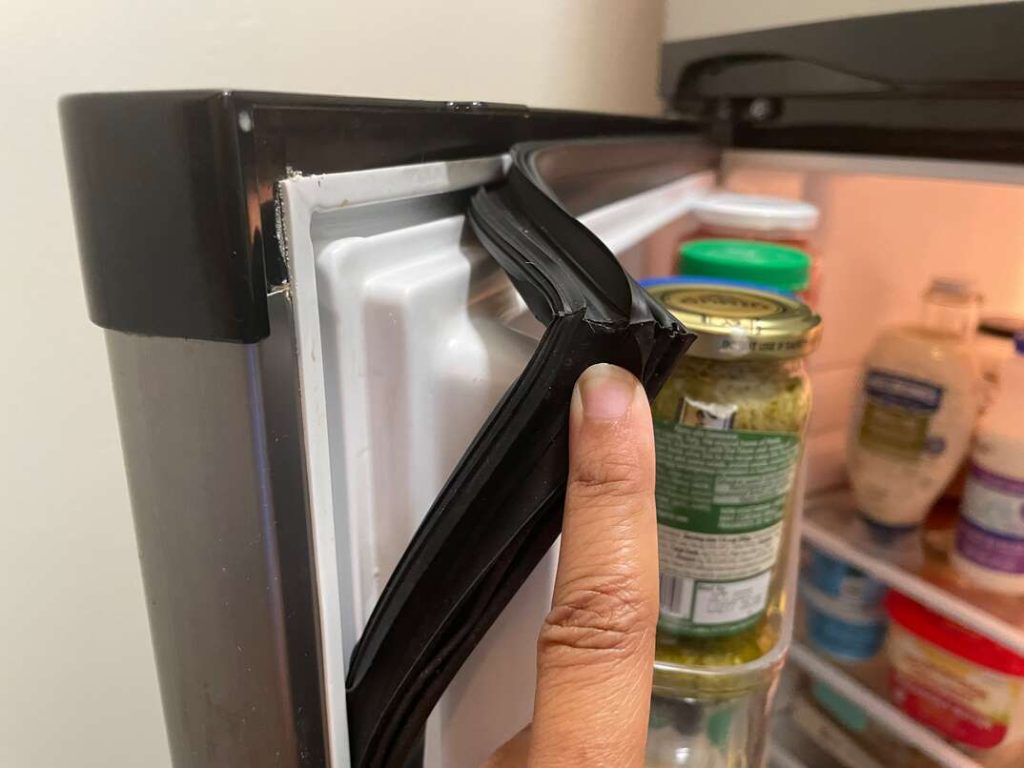
The rubber seal along the perimeter of the refrigerator door is responsible for creating an airtight closure. If the seal is dirty, damaged, or worn out, cold air can escape, resulting in inadequate cooling. Inspect the door seal for signs of dirt, debris, rips, or tears. Clean the seal with a damp cloth to remove any dirt or residue. If the seal is damaged, it will need to be replaced to ensure proper cooling.
5) Malfunctioning Components

In some cases, a Frigidaire refrigerator not cooling may be caused by internal component failures. Several components can affect cooling, including evaporator or condenser fan motors, the thermostat, and the start capacitor. If these components malfunction, they may prevent the refrigerator from cooling properly. Professional repair or replacement of these parts may be necessary to restore cooling functionality.
READ: How to Troubleshoot and Fix a Whirlpool Refrigerator Not Cooling
Step-by-Step Solutions for a Frigidaire Refrigerator Not Cooling
Now that we have identified the common causes of a Frigidaire refrigerator not cooling, let’s delve into detailed step-by-step solutions to help you troubleshoot and fix the issue.
1) Temperature Adjustment
If your Frigidaire refrigerator is not cooling adequately, the first troubleshooting step is to check the temperature settings. Here’s what you can do:
- Locate the temperature control panel or knob inside your refrigerator.
- Check the current temperature setting and compare it to the recommended setting in your user manual.
- If the temperature is set too high, adjust it to the recommended range.
- Wait for a few hours to allow the refrigerator to reach the new temperature setting.
- Check if the cooling has improved. If not, proceed to the next troubleshooting step.
2) Airflow Blockage
Overcrowding the refrigerator with food can restrict airflow and impede cooling. Follow these steps to ensure proper airflow:
- Remove any excessive items from the refrigerator to create space for adequate airflow.
- Avoid placing items directly in front of or blocking the air vents.
- Arrange the items in the refrigerator in a way that allows air to circulate freely.
- Monitor the cooling performance over the next few hours to determine if the issue is resolved.
3) Cleaning the Condenser Coils
Dirty condenser coils can hinder the cooling process. To clean the condenser coils, follow these steps:
- Unplug the refrigerator to ensure safety.
- Locate the condenser coils at the back or bottom of the refrigerator.
- Use a narrow hose vacuum attachment to remove loose dirt and debris from the coils.
- Gently scrub the coils with an appliance brush to remove any stubborn dirt or residue.
- Vacuum any remaining dust and dirt on the floor.
- Reattach any panels or grilles that were removed during the cleaning process.
- Plug in the refrigerator and monitor the cooling performance.
4) Checking and Replacing Faulty Door Seals
Damaged or worn-out door seals can cause air leaks and compromise cooling efficiency. Here’s how to inspect and replace faulty door seals:
- Examine the door seals for any signs of dirt, debris, rips, or tears.
- Clean the door seals with a damp cloth to remove any dirt or residue.
- Test the seal by closing the refrigerator door and placing a dollar bill between the seal and the refrigerator. If the bill slides out easily, the seal may need replacement.
- Order a new seal that is compatible with your specific Frigidaire refrigerator model.
- Follow the manufacturer’s instructions to remove the old seal and install the new one.
- Close the door and ensure that the new seal creates a tight seal when the refrigerator is closed.
5) Professional Repair or Replacement of Components
If the troubleshooting steps above do not resolve the cooling issue, it is recommended to seek professional repair or replacement of faulty components. Professional technicians can diagnose and repair issues with components such as the evaporator or condenser fan motors, the thermostat, and the start capacitor. Contact a reputable appliance repair service or the Frigidaire customer support for assistance.
CHECK: LG Refrigerator Not Cooling: Causes and Solutions
Conclusion
A Frigidaire refrigerator not cooling can be a frustrating problem, but with the right troubleshooting steps, many issues can be resolved without the need for professional intervention. By adjusting the temperature, ensuring proper airflow, cleaning the condenser coils, checking the door seals, and seeking professional help when necessary, you can restore your Frigidaire refrigerator’s cooling functionality. Remember to consult your user manual for specific instructions and always prioritize safety when troubleshooting or repairing appliances.
If you are unable to resolve the cooling issue on your own or require professional assistance, don’t hesitate to reach out to Frigidaire customer support or a reliable appliance repair service. They have the expertise and resources to diagnose and fix complex refrigerator problems, ensuring that your food stays fresh and cool.
Remember, a well-maintained and properly functioning refrigerator is essential for preserving the quality and safety of your food. Regular cleaning, maintenance, and prompt troubleshooting can extend the lifespan of your Frigidaire refrigerator and save you from the inconvenience and expense of a replacement.
With these troubleshooting tips and solutions, you can confidently address a Frigidaire refrigerator not cooling and enjoy the benefits of a properly functioning appliance in your kitchen.
CHECK OUT: How to Troubleshoot and Fix a Samsung Refrigerator Not Cooling
FAQs
My Frigidaire refrigerator isn’t cooling. What should I do first?
Don’t panic! Several simple fixes can often resolve the issue. Start by:
1. Checking the temperature settings: Ensure the thermostat is set to a cool enough temperature.
2. Inspecting for overcrowding: Remove excess items blocking airflow inside the fridge.
3. Examining the door seal: Look for tears, damage, or debris preventing a proper seal. Clean the seal if dirty.
4. Cleaning the condenser coils: Dirty coils can affect cooling efficiency. Clean them with a coil brush or vacuum cleaner.
I’ve tried the basic steps, but my fridge still isn’t cooling. What else can I check?
If the basic checks didn’t help, consider these next steps:
1. Checking the evaporator fan: Ensure the fan inside the freezer compartment is running.
2. Testing the defrost system: A stuck defrost cycle can prevent proper cooling. Check for ice buildup or malfunctioning components.
3. Inspecting the thermistor: This sensor regulates temperature. If faulty, it might provide incorrect readings.
I’m not comfortable troubleshooting myself. What are my options?
If you’re unsure about tackling the problem yourself, it’s best to call a qualified appliance repair technician. They can diagnose the issue accurately and recommend the appropriate repair or replacement.
How can I prevent future cooling problems with my Frigidaire refrigerator?
Here are some preventative measures:
– Regularly clean the condenser coils.
– Avoid overloading the fridge.
– Check the door seal for damage and clean it periodically.
– Schedule regular maintenance checks with a qualified technician.